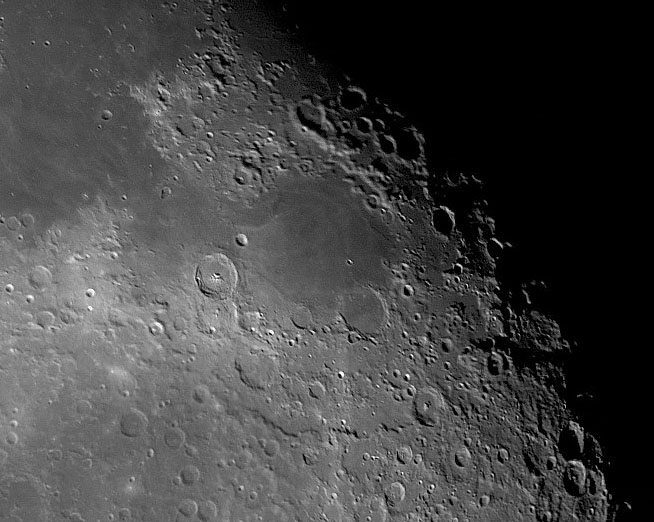
Image by David Dench
Nectaris is the driest impact basin on the lunar nearside. By dry, scientists mean that it has little mare basalt - which flowed across the surface as a liquid - to obscure geologic structure. But even without lava covering, the rim of Nectaris is difficult to see once you get away from the dramatic Altai Scarp. But this low Sun mosaic from David reveals most of the rim. The Altai arcs from Kant (west of Theophilus) to Piccolomini, and although the scarp is gone the extension around the southeast side of the basin is here clearly visible. Inside the rim is mostly smooth plains, and beyond is higher and rougher cratered terrain. Going south from Kant the rim follows the western border of Sinus Asperitatis. On its northern side the Nectaris rim is weak, but visible. Notice that some pieces of relatively smooth material exist in Terra Manna, and a hint of a scarp can be seen eastward of the bright spot that is Censorinus. If you look at the distance from the center of Fracastorius (the edge of the central mare) to Piccolomini (the edge of the topographic rim), you will see that it is the same distance from the edge of the mare to the edge of the rim on the north side. You have now toured most of the 820 km wide ring of the Nectaris basin - congratulations!
Technical Details:
8 December, 2006. 16″ Dob + Trust 820 P&S camera. Stitched with AutoStitch, processed with ImagesPlus and noise reduction with NoiseWare. The Moon was so low that half the mirror was blocked by the observatory wall!
Related Links:
Rükl plates 46, 47, 57 & 58
David’s website
Christmas is coming - consider leaving a list of lunar books on top of a spouse’s pillow - just make sure you include the LPOD URL so that you support LPOD when buying lunar books (or ANY book) from Amazon!
COMMENTS?
Click on this icon File:PostIcon.jpg at the upper right to post a comment.



